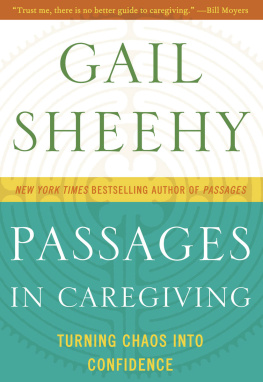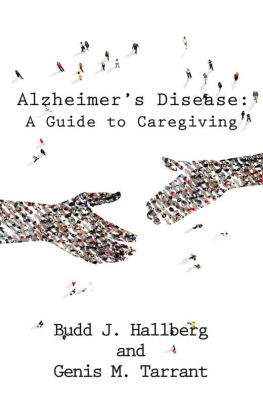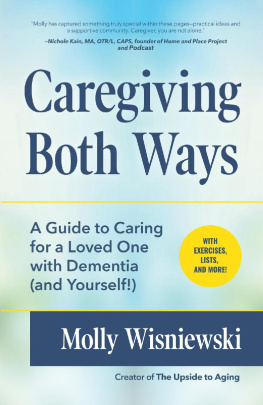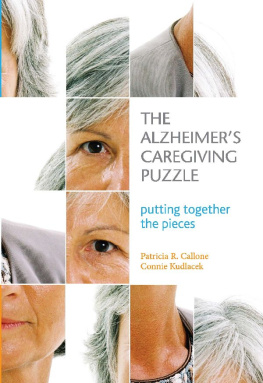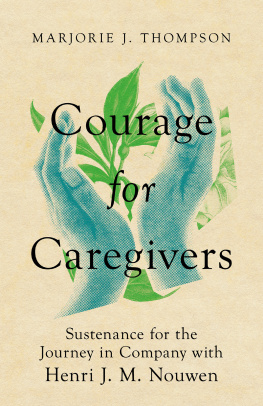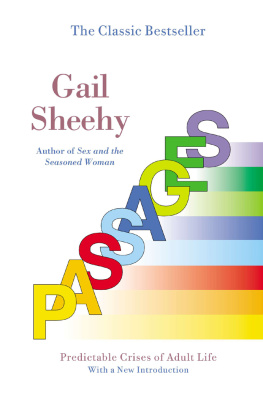This book was inspired by my journey as a caregiver for my husband, Clay Felker. The story of how we survived and even thrived over the last seventeen years of Clays life is threaded throughout these pages, along with the stories of many other inventive caregivers and the helpful strategies that we have all learned the hard way. But before we begin, I need to give a little context.
When people grow older, get sick and die, their formerly robust lives are often forgotten. To be forgotten is something we all fear. Its why we make an effort to leave a legacy. Obituaries that celebrated Clay as a journalistic giant and magazine pioneer and legendary editor all stopped before the rich final period of his life. It was not a period of public celebrity, but one of quiet celebration. To appreciate the challenges we faced in those years, readers unfamiliar with Clays history should know something about the man in his prime.
Clay was born in 1925 in a racially segregated border state, Missouri, and his insatiable curiosity always led him to cross boundaries. Not content to be cosseted in the safe white suburb of Webster Groves, he ventured into the black neighborhood of St. Louis, hungry for the jazz music of Duke Ellington and Ella Fitzgerald. He found jukebox vendors who sold race records for five cents apiece. Jazz became the sound track to Clays life.
He was always in love with New York, from the time he first read The New Yorker and Esquire as a shy, skinny preteen. He imagined the urbane editors of such magazines dressed in black tie, ready to slide into limousines at the drop of an invitation to the dinner tables of the citys power brokers. Editing the student newspaper at Duke University and the base newspaper during his three years in the navy was a mere out-of-town tryout. Two seasons of traveling the country as a sportswriter covering the baseball Giants exposed him to Americas big-league towns. But to his mind, he was still a rube until he learned how to be an editor in Americas premier City of Ambition, New York.
He came close during the late 1950s and early 1960s, when he was one of three young turks at Esquire, vying for the paternal nod to become editor in chief. Every week, for several years, each rival threw out his best story ideas and the other two shot them down. When Clay lost this blood-on-the-walls contest to Harold Hayes, he went on to the fabled New York Herald Tribune . Asked to create a Sunday supplement, he rejected pabulum and instead mirrored his primary-color vision of New York. It smacked readers with glaring cover images of their city and hooked them with irresistible food and cultural features. He drafted the papers two best reporters, legends-in-the-making Tom Wolfe and Jimmy Breslin, and hounded them into producing must-read stories almost weekly for four years. Wolfe, the tidewater Virginia gentleman, had a fiendish eye for deflating the vanity of Manhattan swells. Breslin, the snarling Irish bad boy, had a thirst for Damon Runyonesque guys and dolls.
When the Herald Tribune folded in 1967, Clay raised a million dollars and combined it with his severance pay to give birth to his dreamthe first magazine devoted entirely to one city: New York. It was 1968 and the country was coming apart at the seams with two shattering assassinations, of Dr. Martin Luther King Jr. and Senator Robert Kennedy. New York City was in an economic tailspin. Racial fury seethed in Harlem while Columbias antiwar students were chanting Revolution! I was there in graduate school.
Out of the turmoil of 1968, Clay fathered a new generation of star journalists, among them Gloria Steinem, whom he first turned loose on politics and later showcased with her own magazine, Ms., inside the pages of New York. Clay and his tribe invented an alternate New York, a circus of street culture as seen through the eyes of a new young generation of escapees from the suburbs. Most of his writers were rebels with a causefree living and loving on the New Frontier, far from the confines of white flight, fascinated by every ingredient in the urban stew pot, the Big Apple.
It was within this turmoil that Clay and I began our relationship, challenging each other with ideas, chasing stories, wrestling through the feminist revolution to educate (or annihilate) each other, falling in love, and resisting the convention of marriage. After a whirlwind seventeen-year courtship, we finally married in our middle years, in 1984, and adopted a child.
Clay was a progressive, but he never had any fixed ideological point of view. There was no formula his writers had to fit. He often said people do their best work when they are valued for their personal vision and not just for their professional skills. This became the Felker effect.
Clays duplex apartment on Manhattans Upper East Side defined him. It was the stage set upon which, starting in his thirties, he learned to play the role of the quintessential New York editor. Buttons on the phones were always alight. The door was always open. People streamed in and out, talking, asking, pitching. Emerging from the elevator, guests found themselves looking down from a balcony into a sunken living room. Framed by cathedral-sized windows behind him, Clay occupied a big club chair by the fireplace, devouring soft-boiled eggs and five daily newspapers.
Look whos here! was his welcoming bellow to breakfast guests, as if they were the most important people in the world. Clays greatest gift was to be a natural mentor. He lent himself to be used as an opportunity for others development, becoming a protean assemblage of all the talents he nurtured. If he thought you could do it, he made you believe you could.
Milton Glaser, the Bronx-bred artist and graphic designer who was Clays partner in starting New York magazine, was amused by Clays constant astonishment at the ways of the city. He never developed the thick cynical veneer of so many other editors, he said. Clay was always vulnerable to fresh ideas and possibilities.
Various aspiring novelists tried to fictionalize Clay, but none successfully captured the man behind the scenes. I believe my daughter Maura, the step-daughter he adored, came closest.
When I was around five or six, I began to form the impression that he was magic, she has written. Whenever Clay thrust out a hand for a taxi, a Checker cab appeared, even though there were hardly any left in New York. Id look up Second Avenue at the tide of yellow, and there wouldnt be one in sight. The next thing I knew I was climbing in and opening up the jump seat, trying to remember when Id looked away.
When we went somewhere with him, hed often just start off walking impossibly fast, down some dark street. Id yank my mother to keep up in her heels. If I asked how much longer, hed stab a pointed finger into the air and grunt, Just, just, just. And then suddenly hed stop and there would be a door, and wed go in, and there would be great music, a splendid room, some unbelievable delight, people sounds, something happening. It was magic. So I learned, like everyone else, that even though you didnt know where you were going, if you were with Clay it was going to be fun, and probably fascinating, maybe even spectacular.
Inflated by ambition, Clay finally flew too high. He spent too much to buy The Village Voice, hired a chef for editorial lunches, and launched a West Coast version of New York, a poor cousin called New West. Perversely, the moguls who prospered by investing in his successwho loved dining out on the buzz about his magazineswere quick to betray him. In 1977, they sold him out to the Australian press baron he had introduced to New York, Rupert Murdoch.
Stunned by the hostile takeover, Clays staff walked out en masse. From a tabletop in the nearest restaurant, ironically called Chicago, Clay addressed them. Dont give up your jobs on my account. Get some money out of these bums! He went on to buy, create, or edit many other publications and fostered the highest dreams of his protgs to write their own books, create their own magazines, start their own media companies. Their names are legion. Dozens of the artists who worked for Clay and Milton became renowned art directors, designers, and painters shown around the world. A tribeand a bondwas formed by those seven years of journalistic utopia that we all enjoyed at the early New York magazine.

